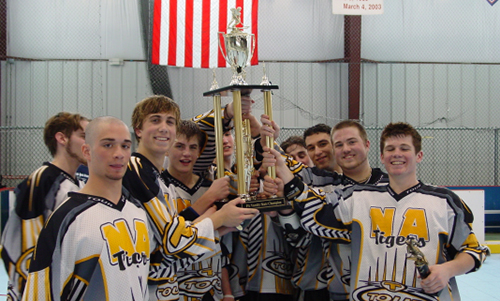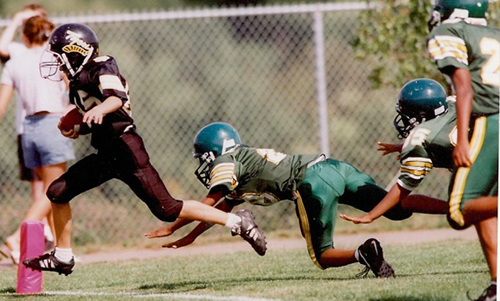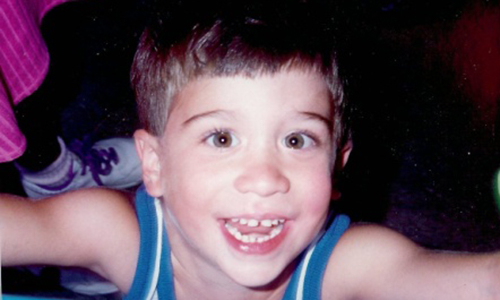John Pell grew up in Pahokee, FL, back in the 1950s. He went to school barefoot with the hem of his jeans rolled. Every day, he milked the cow and chopped firewood, taking turns with his brothers, before breakfast and dinner. John was full of fun. One day while his mother hosted bridge club, he quietly brought his goat Gruffo around to surprise everyone. He gave nicknames to all six of his siblings, the best of which went to his baby sister, Kathy, born in the 60s—The Punk!
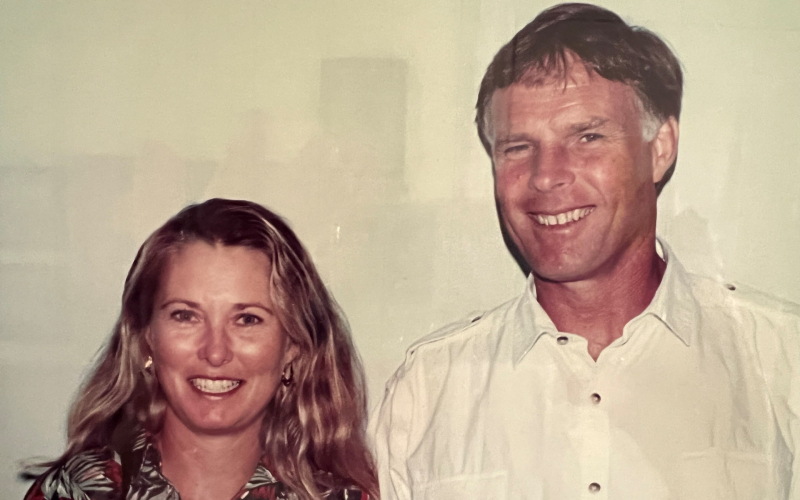
John loved football, rightly so, as his father was the football coach and athletic director. Pahokee didn’t have little league football, but he got plenty of experience playing with friends in the park and joining the junior high school team. As John was small, he stayed back a year in the seventh grade to give him a little growth advantage. In high school, John played quarterback. Football was so rough against rival teams that he finished more than one game with a clawed face and vomiting until he had to go to the emergency room.
While at Pahokee Junior-Senior High School, John took part in many sports. Although mostly known for football, he was great at basketball too. A teammate once said John’s set shot was a performance, practiced to perfection. John would sink down, knees bent, ball in front of his nose, and then explode upward in one fluid motion, hands splayed over his head like butterfly wings. The ball would sail towards the rafters, and of course would go in, usually all net. It was always quite a show.
Along with sports, John was an avid boy scout who went on incredible camping and fishing trips. He also worked on weekends and holidays with a local carpenter through high school and college breaks.
John played defensive back at Northeastern Oklahoma A&M (NEO). He received All-American Honors while at NEO and still holds a record of 18 interceptions in 20 games from 1966-1967. He went on to play at Florida State (FSU) as a cornerback. His teammates awarded him the Page trophy for his personifying spirit of Michael Page. John was noted for his tremendous speed, courage, and pinpoint passing. In 1968, he participated in the first annual Peach Bowl. He graduated with a Bachelor of Science degree in 1971.
For a short time after college, John went on to play professional and semi-pro football in Canada with the Ottawa Rough Riders and Orlando Panthers. He remained small (6’1” and 183 lbs.) and by the end of his career, had suffered at least 31 concussions he could recall. His worst concussion was at NEO during practice. A teammate knocked him out cold, and he woke up 30 minutes later on the locker room shower floor.
John started his career in the Florida Keys teaching industrial arts and coaching at Plantation Key High School. Before long, he found real estate more lucrative. He became a real estate broker, opening his own firm and turning it into a successful business. He earned two Commercial-Investment Real Estate Council Certificates, one for “Fundamentals of Real Estate Investment and Taxation” and the other for “Fundamentals of Location and Market Analysis.”
His work attire consisted of tennis shorts and shoes. The nearby Cheeca Lodge called John anytime they had a guest looking for a tennis partner. He loved the game and played anytime he wasn’t working or on the beautiful blue water. While crossing the bridge near his office, he once told his son, Clay, “Roll down your window. Take a good look. Always remember, THIS IS LIVING!”
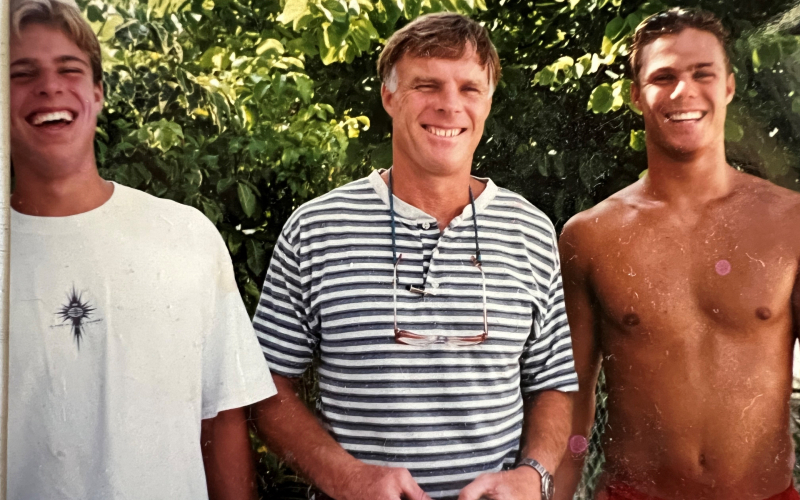
He loved being a father and grandfather. His children, Johnna Juarez, Clay Pell, and John David Pell, found him to be a great mentor, giving them sound and unbiased advice—always there to listen. He encouraged sports and attended as many of his children’s games as possible. His sense of humor transferred through the family. The grandkids called him “Geez”, short for old geezer. When he phoned the kids, he always announced, “It’s the Old Man.”
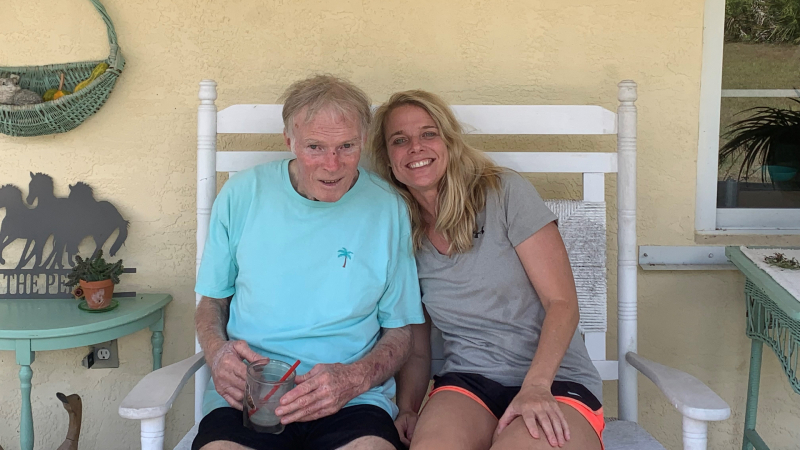
After many good years in real estate, he and his wife Roseanne moved to Okeechobee, Florida, to be closer to his aging parents. John and Rosanne built a home on beautiful, wooded-acreage in Bassinger, north of Okeechobee. He continued selling real estate and playing tennis while raising a few cows and riding his beloved cracker horses.
Around the age of 66, John began noticing a physical change. Three years later, he was diagnosed with Neocortical Lewy Body Disease. John’s walk became a shuffle, his dexterity and cognitive functions worsened, and hallucinations began. He had panic attacks, but with an antidepressant was able to control his anxiety. Mentally, he was declining and needing more care. John started having seizures which caused many falls and debilitated him. After a brief hospitalization, he went to a rehab facility. His seizures were more frequent, he was not cognitive, and lost his appetite. Less than two months later, John passed away at the age of 75.
John’s wish was to donate his brain to the UNITE Brain Bank. Upon study, researchers found many medical conditions, including:
Stage 3 (of 4) Chronic Traumatic Encephalopathy (CTE)
Neocortical Lewy Body Disease
Limbic-predominant age-related TDP-43 encephalopathy (LATE), Stage 2
Vascular disease
While John had many reasons to complain, he never did. He remained a loving, caring husband, father, and brother to the end. John was honorable and trustworthy in his personal and business life. His gentleness, kindness, and humor were evident even in the hospital and rehab.
His injuries never dampened his spirit and love of football. He believed football taught him the importance of team building, tenacity, and to always give your best.
The Pell family feels blessed to have had the opportunity to work with the wonderful staff at the Concussion Legacy Foundation and cannot thank them enough for all their help.
